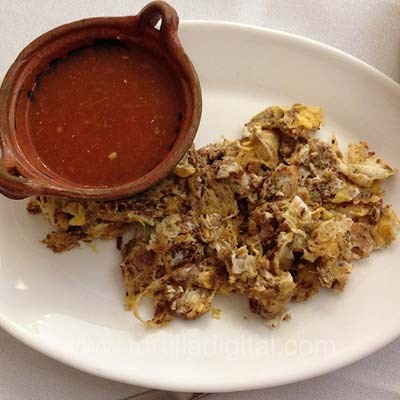
The dish grew in popularity and is now served in both the north and south regions of Mexico. It wasn’t until the 1920s that a woman in Nuevo León began serving machaca con huevo to highway workers in the area.Įveryone loved it so much and ended up calling her La Tía Lencha. This was the only way to preserve meat back before refrigeration became popular. Due to the climate, early settlers in the cattle-raising areas of Mexico would dry thinly cut and salted beef out in the sun. The northern states of Mexico have claimed the origins of machaca. It’s incredible how versatile and nutritious both of these ingredients are!Īlthough this recipe is definitely not traditional, the flavors and textures turned out delicious! It’s one we’ve added to our weekly meal rotation.

Plus, a great replacement for machaca is dehydrated young jackfruit. If we didn’t make it clear, the two main ingredients in this recipe are unfortunately not vegan-friendly!īut, one of our favorite substitutes for eggs is crumbled tofu. Unlike beef jerky, machaca is typically rehydrated before being eaten.įor machaca con huevo, the meat is sautéed with vegetables and eggs, and it’s almost always served alongside flour tortillas to make little breakfast tacos. You can also find machaca sold in long strands, but the most common preparation is the shredded texture. Traditionally, marinated meat ( beef or pork) is rubbed with spices before being dried out, shredded, and pounded into a fluffy mixture.

The word “machaca” comes from the Spanish verb machacar ( meaning “to pound”) which is the process this dried meat undergoes. Machaca is consumed all over the country and is best described as finely ground beef jerky ( although sometimes other meats are used). Machaca con huevo refers to a Mexican breakfast made with a type of dried meat ( machaca) and eggs ( huevos). It’s loaded with protein, great for meal prep, and ready in under 30 minutes. If you’re a savoury breakfast person and enjoy easy-to-make meals, this machaca con huevo recipe has your name all over it.


 0 kommentar(er)
0 kommentar(er)
